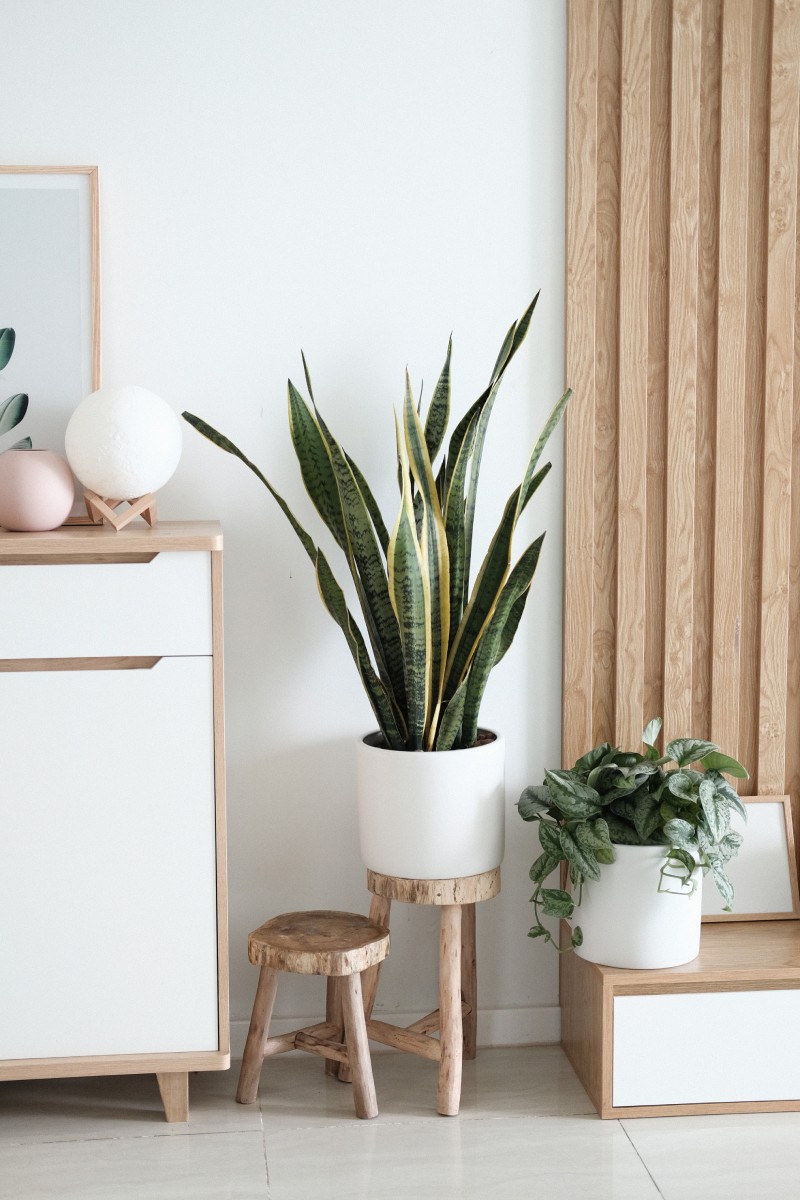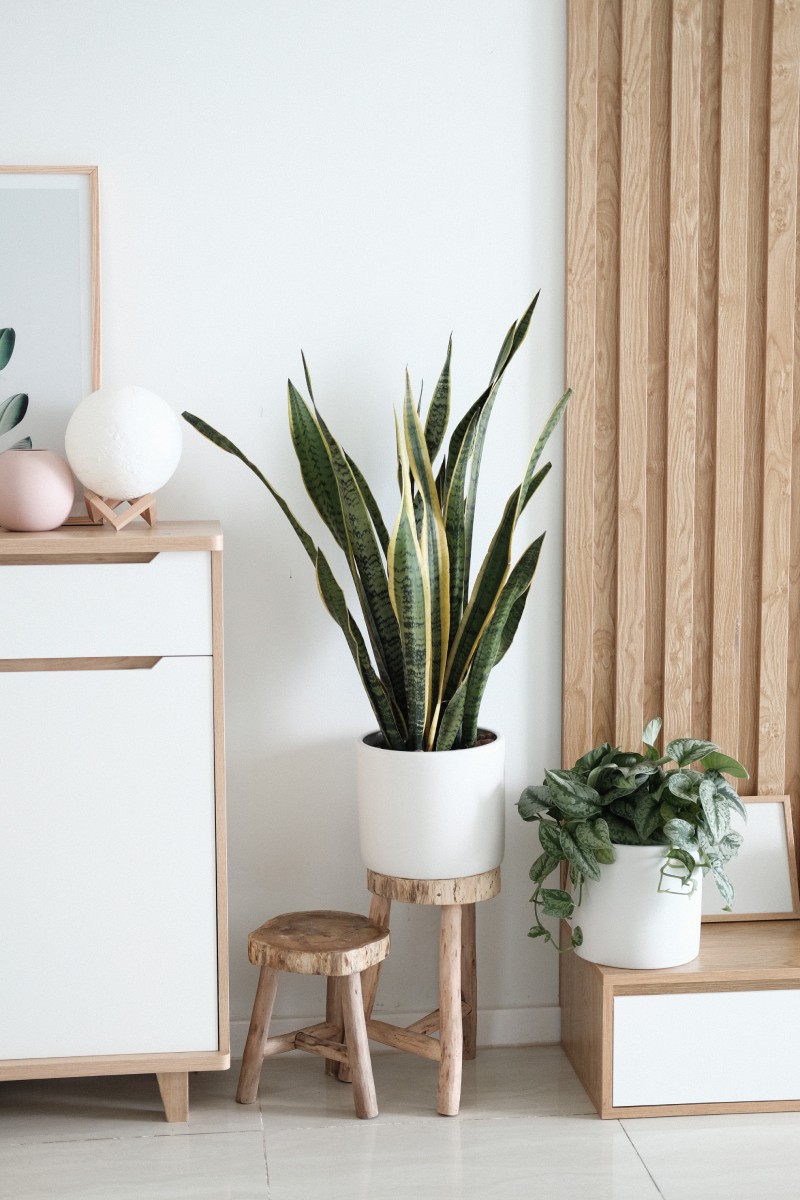Introduction
In the intertwined realms of home decor and healthy living, indoor plants have carved a niche, blossoming into silent guardians of air purity within our abodes. Not merely confined to their aesthetic appeal, these verdant companions weave a tapestry where functionality and beauty intertwine, heralding a wave where our living spaces are not just seen, but deeply breathed and felt. Through their subtle, continuous act of air purification, indoor plants invite us into a realm where every inhalation is a step towards healthier living.
The Importance of Indoor Air Quality
Indoor air quality doesn’t merely linger in the background of our lives; it permeates every moment, every breath, infusing our bodies with either vitality or latent pollutants. Given the significant amount of time we spend indoors, particularly in our own homes, the quality of the air becomes intrinsically tied to our overall health and wellness. It’s not just about avoiding allergens or pollutants, but about crafting an internal environment that enhances our day-to-day existence.
A Closer Gaze at Health
A nuanced look at health encapsulates not just the absence of illness but thriving in a space that promotes continuous well-being. It’s here that indoor air quality transforms from a passive background feature into an active, influential player in our daily life narratives.
Brief Overview of How Plants Purify the Air
While we’re nestled within our homes, plants embark on a silent, diligent journey of absorbing potentially harmful particles and volatile organic compounds from the air, a function they perform with graceful ease. Engaging in a process termed phytoremediation, plants absorb these particles, primarily through their leaves and roots, and either store or transform them into harmless byproducts. This isn’t merely a passive act. Plants, through their daily rhythms of photosynthesis, actively engage with the air around them, extracting carbon dioxide and gifting us with fresh, oxygenated air in return.
Plants as Silent Caretakers
Engaging with plants as caretakers, it becomes pivotal to recognize their silent, unceasing contributions, understanding that every frond and leaf is a step towards cleaner, healthier air in our living spaces.
Overview of the Plants that Will be Covered
Embarking further into this verdant exploration, we’ll delve into a curated selection of indoor plants renowned for their air-purifying capabilities. Ranging from the stoic Snake Plant to the vibrant Areca Palm, the easy-going Spider Plant to the graceful Peace Lily, we shall navigate through their unique aesthetic appeals, distinct care requirements, and notably, their capacity to uplift the quality of indoor air.
Welcoming Diversity in Green Choices
Offering a garden of choices, this guide aspires to provide options for both the seasoned plant enthusiast and the cautious beginner, ensuring every home finds its perfect green companion.
In the sections that unfold, we shall not only explore the tangible, scientific aspects of how these plants contribute to enhancing indoor air quality but also venture into the spaces they create - the intangible atmospheres of calm, vitality, and refreshment that pervade spaces graced by their presence. Through this, may we all find our unique path within the world of indoor plants, forging spaces that breathe with vitality, purity, and the gentle whisper of nature.
Spider Plant (Chlorophytum comosum)
Spider Plant, scientifically known as Chlorophytum comosum, stands out in the botanical world with its effortlessly elegant aesthetic and an unassuming demeanor, making it an endearing presence in any indoor space. Bridging the realms of easy care and optimal functionality, the Spider Plant graciously spins a web where simplicity meets a compelling capacity for indoor air purification, marking itself as a top contender in the selection of air-purifying greenery for your home or office space.
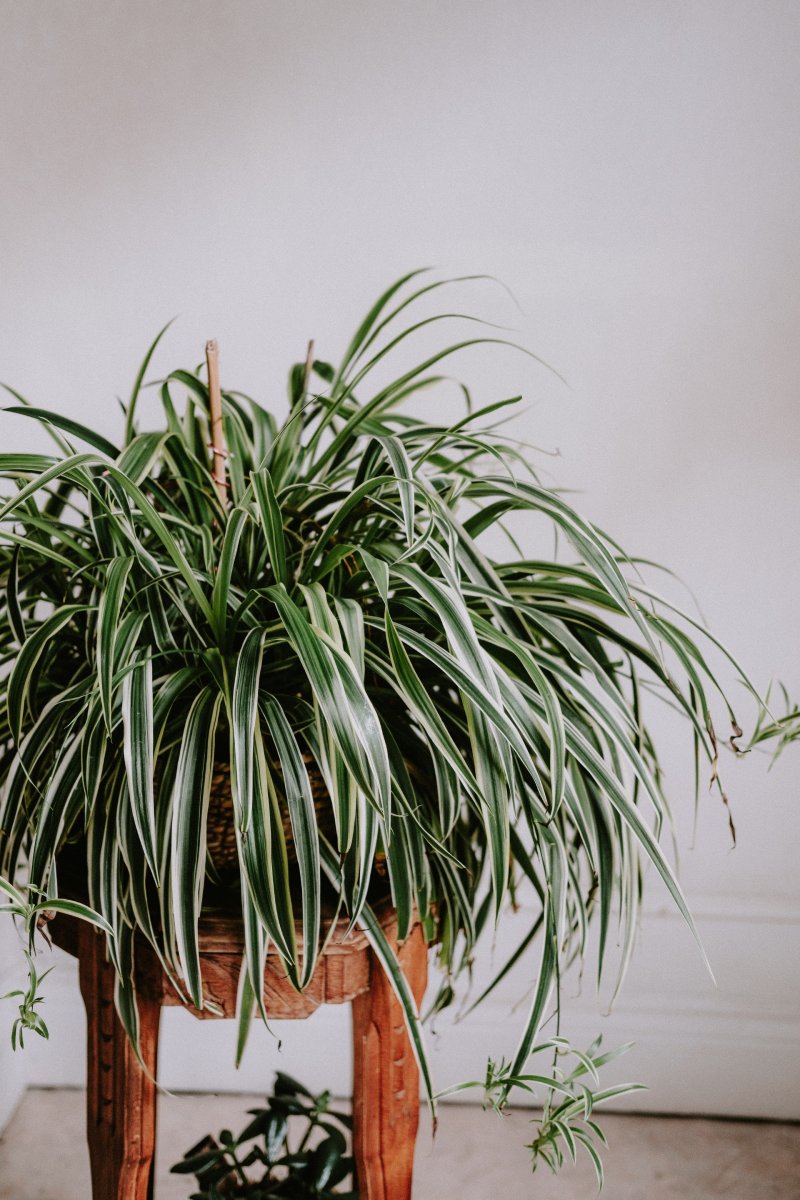
Brief Description and Aesthetic Qualities of the Spider Plant
In the rich tapestry of indoor plants, the Spider Plant makes a charming, understated statement with its long, arching leaves adorned with a rhythm of green and white stripes. The delicate, spiderette offshoots, from which the plant gets its name, cascade downwards, creating a lush, vibrant curtain of greenery that not only enlivens a space but also infuses it with a serene, calming energy.
A Versatile Decorative Companion
Positioning itself as a versatile decorative companion, the Spider Plant’s aesthetic seamlessly meshes with varied interior styles, granting it the ability to complement both minimalist and lush, plant-dense interiors.
Its Air Purifying Abilities
The Spider Plant doesn’t just stop at being visually captivating. Within its slender leaves and gentle offshoots lies a robust, unyielding warrior against indoor air pollutants. Renowned for its ability to combat pollutants like benzene, formaldehyde, carbon monoxide, and xylene, the Spider Plant engages in a silent, yet powerful dialogue with the air around it, cleansing it of unwarranted intruders and bestowing upon the environment a refreshing, revitalizing purity.
A Guardian of Air Purity
By navigating through the scientific lens and numerous studies, one observes the Spider Plant quietly emerging as a guardian of air purity, subtly enhancing the quality of the air we breathe within our cherished indoor spaces.
Care and Maintenance Tips
Not only is the Spider Plant a formidable ally in purifying indoor air, but it also distinguishes itself through its remarkably forgiving and adaptable nature when it comes to care and maintenance. Thriving in indirect light and requiring only moderate watering, it extends a welcoming invitation to even the most novice of plant caregivers.
Light and Watering
Embracing the Spider Plant into your space entails providing it with bright, indirect light and watering it sparingly, allowing the soil to dry out between watering sessions to prevent overwatering and root rot.
Pest Management
The Spider Plant, while relatively resilient, can occasionally be visited by pests like spider mites. Keeping an eye on your plant, ensuring its leaves remain clean and dust-free, and employing mild, natural insecticides when needed will ensure your Spider Plant remains a healthy, vibrant part of your living space.
In the web that the Spider Plant weaves, each thread intertwines the plant’s aesthetic appeal, potent air-purifying abilities, and easy-going nature, crafting a narrative where beauty, functionality, and simplicity coalesce. Engage with the Spider Plant, and you invite into your space a green companion that not only enhances the visual appeal but also silently and consistently works to uplift the very air that cradles your every breath.
Snake Plant (Sansevieria trifasciata)
The Snake Plant, with its vertical and resilient nature, boldly delineates itself as a noteworthy member of the indoor plant community. Not only does it grace indoor spaces with its structural elegance and minimalist aesthetic, but it also tirelessly labors behind the scenes, executing an unseen yet potent act of air purification. Its stark, upright leaves scribe tales of adaptability and ease, establishing the Snake Plant, or Sansevieria trifasciata, as a gift to indoor gardeners, from beginners to seasoned green thumbs.
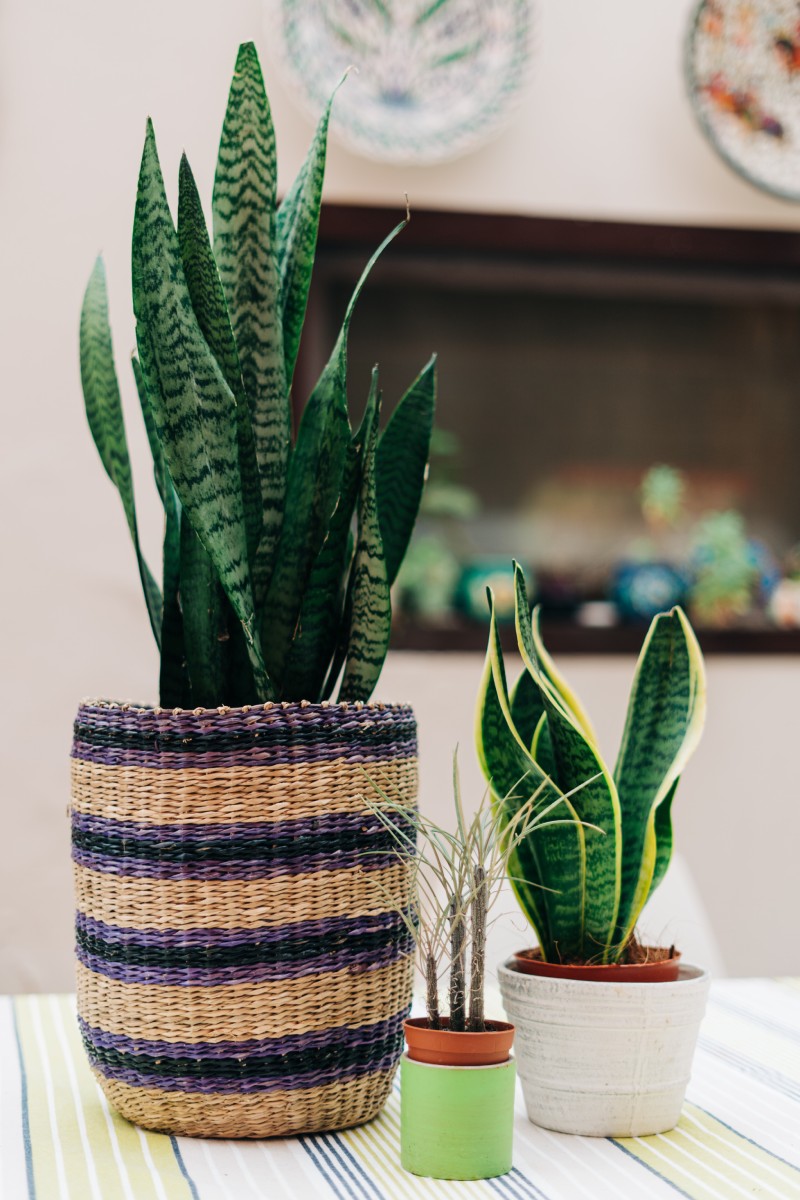
Description and Unique Features of the Snake Plant
Positioned prominently within the spectrum of indoor foliage, the Snake Plant demands recognition through its sculptural leaves and unassuming beauty. Its elongated, sword-like foliage, edged with a rich green, often variegated with lighter tones, orchestrates a symphony of simplicity and modernity, making it a favorite in contemporary and classic interiors alike.
Architectural Allure
The Snake Plant harmoniously marries architectural allure with biological splendor, enabling it to stand as a subtle statement piece in various spatial settings, from cozy corners to spacious, open rooms.
Its Role in Air Purification
Actively entwining aesthetics with functionality, the Snake Plant diligently purges the air of pollutants like benzene, xylene, toluene, and formaldehyde. A unique feature in its arsenal is its ability to perform photosynthesis at night, unlike most plants, which generally only do so during the day. This allows it to convert CO2 to oxygen even when the sun has set, promoting an enriched and rejuvenated air quality around the clock.
A Nighttime Oxygenator
Through its nighttime activities, the Snake Plant boldly asserts itself as a continual contributor to indoor air enhancement, facilitating an environment conducive to restful sleep and revitalized wakefulness.
Guidelines for Care and Upkeep
Amidst its decorative and air-purifying prowess, the Snake Plant also bestows the gift of simplicity in its care requirements. Renowned for its stoic resistance to less-than-ideal care conditions, it benevolently forgives sporadic watering and fluctuating light conditions, navigating through varied care patterns with remarkable ease.
Watering and Light Requirements
Endowing your Snake Plant with a long, healthy life involves providing it with well-draining soil, allowing it to dry between waterings, and placing it in indirect light. While it tolerates low light, it thrives splendidly when granted a spot with ample, albeit indirect, sunlight.
Incorporating it Into Your Space
Incorporating the Snake Plant into your space isn’t merely an act of enhancing aesthetic appeal, but also a step towards constantly purified and refreshed air, particularly during the nocturnal hours when most plants cease their photosynthetic activities.
Through the stories that weave together its aesthetic simplicity, constant air purification, and unpretentious care requirements, the Snake Plant undeniably carves out a space for itself in the domain of indoor gardening. It doesn’t merely exist in a space; it subtly transforms it, embedding into every corner a silent yet tangible breath of freshness and vitality. Whether stationed in a secluded bedroom corner or amidst a cluster of foliage in a living space, the Snake Plant steadfastly stands as a sentinel of purity and simplicity in our indoor environments.
Boston Fern (Nephrolepis exaltata)
Embarking on a journey through the lush, feathery fronds of the Boston Fern (Nephrolepis exaltata), we find ourselves enveloped in a realm where serene greenery intersects with potent air-purifying capabilities. Unassuming in its delicate beauty, this popular indoor fern not only elevates the aesthetic appeal of our spaces but also actively participates in fostering a cleaner, healthier indoor environment, demonstrating that verdant splendor and functionality can indeed coalesce harmoniously.

Overview of the Boston Fern’s Characteristics
As we peer into the world of the Boston Fern, we encounter a plant characterized by its splendidly arching fronds, elegantly adorned with small, intricately patterned leaves. The fronds cascade gracefully, providing a sumptuous, voluminous aura, which imparts a gentle vibrancy and a hint of the wild, untamed beauty of lush forests to our indoor spaces.
Adaptability and Placement
Adaptable and simultaneously a statement of delicate finesse, the Boston Fern can effortlessly drape from hanging baskets or perch atop pedestals, where its fronds can cascade freely, creating a verdant waterfall that enriches any space with an organic, lively vibe.
How it Purifies the Air
The Boston Fern diligently works behind its graceful exterior, meticulously filtering the air of pollutants, including formaldehyde, xylene, and toluene. Its dense fronds actively engage in purifying the air, making it a substantial yet subtle ally in promoting indoor air quality.
Contributing to Humidity
Additionally, its propensity to release moisture into the air contributes to enhanced humidity within its immediate surroundings, offering a subtle boon to our respiratory systems and skin, particularly during drier seasons or in artificially conditioned spaces.
Tips for Proper Care and Growth
Embarking upon the care journey for a Boston Fern, it’s essential to be cognizant of its proclivities and needs. While it generously showers our spaces with aesthetic and functional gifts, it humbly asks for a few particular conditions in return to ensure its health and vibrancy.
Moisture and Light Requirements
Ensuring consistently moist soil without waterlogging and providing bright, indirect light forge the pathway to a thriving Boston Fern. It whispers a plea for high humidity, which can be facilitated through regular misting, placing it in naturally humid areas like bathrooms, or utilizing a humidifier.
Positioning and Pruning
Position it where its lovely fronds can freely cascade, and don’t shy away from occasional pruning to maintain its lush, full appearance and promote new growth.
The Boston Fern stands as a testament to the power inherent in combining visual charm with functional potency. It softly whispers of nature’s undulating forests while tirelessly filtering our indoor air, and thus, through understanding and catering to its modest needs, we pave the way for a mutually beneficial relationship with this exquisite, air-purifying gem. May your spaces be graced with its gentle charm and your air with its purifying whispers, as the Boston Fern weaves its serene, cleansing narrative into your indoor jungles.
Peace Lily (Spathiphyllum)
In the search for indoor plants that not only enhance the aesthetic appeal of a space but also purify the air, the Peace Lily, scientifically known as Spathiphyllum, takes a prominent place. Known for its graceful appearance and impressive air-cleansing properties, the Peace Lily adds a touch of serenity to any room, while actively contributing to a healthier indoor environment.
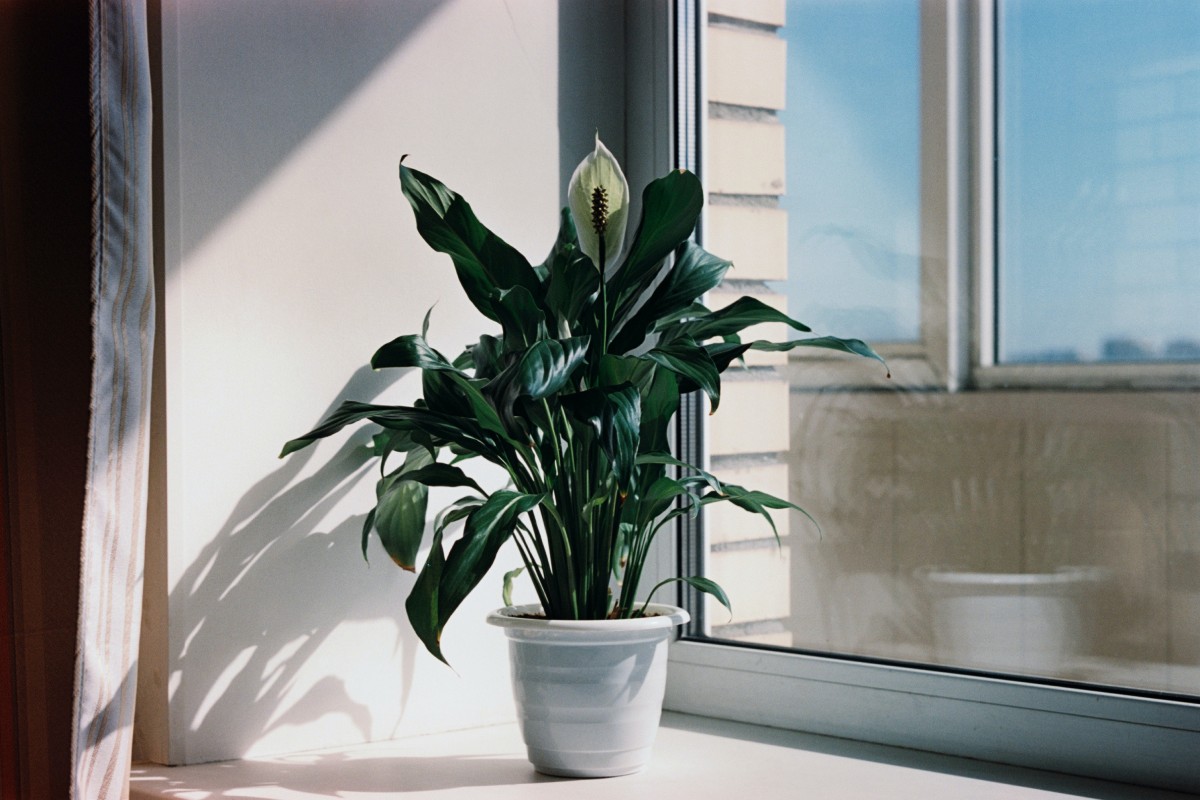
Brief Introduction to the Peace Lily
The Peace Lily is revered not just for its simplistic and elegant visual appeal but also for its remarkable ability to thrive indoors with minimal care. Boasting glossy green leaves and unique white bracts, which are often mistaken for flowers, this perceptive plant has a well-earned reputation for being a superb indoor companion. Notably, Peace Lilies aren’t just favored for their beauty, but also for their capacity to positively impact indoor air quality.
A Symbol of Peace and Tranquility
The white bract, which encapsulates a soft yellow inflorescence, is often associated with peace and tranquility, giving the Peace Lily its serene demeanor and symbolizing purity and harmony.
A Hardy and Adaptable Indoor Plant
Able to adapt and thrive in various indoor conditions, from low light levels to different humidity ranges, Peace Lilies have proven themselves as a hardy and adaptable indoor plant choice for many households and offices.
Its Air Purifying Benefits
The Peace Lily doesn’t just stand out for its gentle aesthetic but plays a crucial role in enhancing air quality, having been recognized by NASA for its air-purifying abilities. It efficiently removes airborne toxins such as ammonia, benzene, formaldehyde, and xylene, thereby improving the overall air quality in its vicinity.
Removal of Airborne Toxins
Actively absorbing toxins through the pores present on the surface of their leaves, Peace Lilies work relentlessly to purify the air around them.
Enhancing Indoor Humidity
By releasing moisture into the air, Peace Lilies also help in maintaining an optimal indoor humidity level, thereby creating a refreshing and comfortable living space.
Advice on Caring for a Peace Lily
Caring for a Peace Lily often involves ensuring it has adequate light, appropriate watering, and is shielded from direct sunlight to prevent its delicate leaves from scorching. While being renowned for their low-maintenance care regimen, a bit of attention and love can keep them thriving and continually purifying your indoor air.
Balancing Light and Shade
Ensuring that your Peace Lily receives bright, indirect light, while also enjoying periods of shade, aids in maintaining its vibrant foliage and encouraging blooms.
Watering and Soil Moisture
Maintaining consistently moist soil without waterlogging and allowing the top inch of soil to dry out between watering sessions is pivotal in fostering a healthy Peace Lily.
Incorporating a Peace Lily into your indoor space doesn’t just offer a visual uplift but also paves the way towards establishing a cleaner, more purified living environment. The added bonus of its relatively straightforward care regimen and striking appearance makes it an exemplary candidate for both seasoned plant enthusiasts and beginners alike. Bringing together the amalgamation of aesthetics and functionality, the Peace Lily stands out as a top pick among air-purifying indoor plants.
Rubber Plant (Ficus elastica)
Embarking on a journey through the world of air-purifying plants, the Rubber Plant, or Ficus elastica, asserts itself as a vital addition. With its bold, dark green leaves and remarkable adaptability to indoor conditions, it provides both aesthetic and environmental enhancements to interior spaces. Originating from Southeast Asia, the Rubber Plant has taken root in households worldwide, lending its lush foliage and purifying capabilities to improve indoor atmospheres.
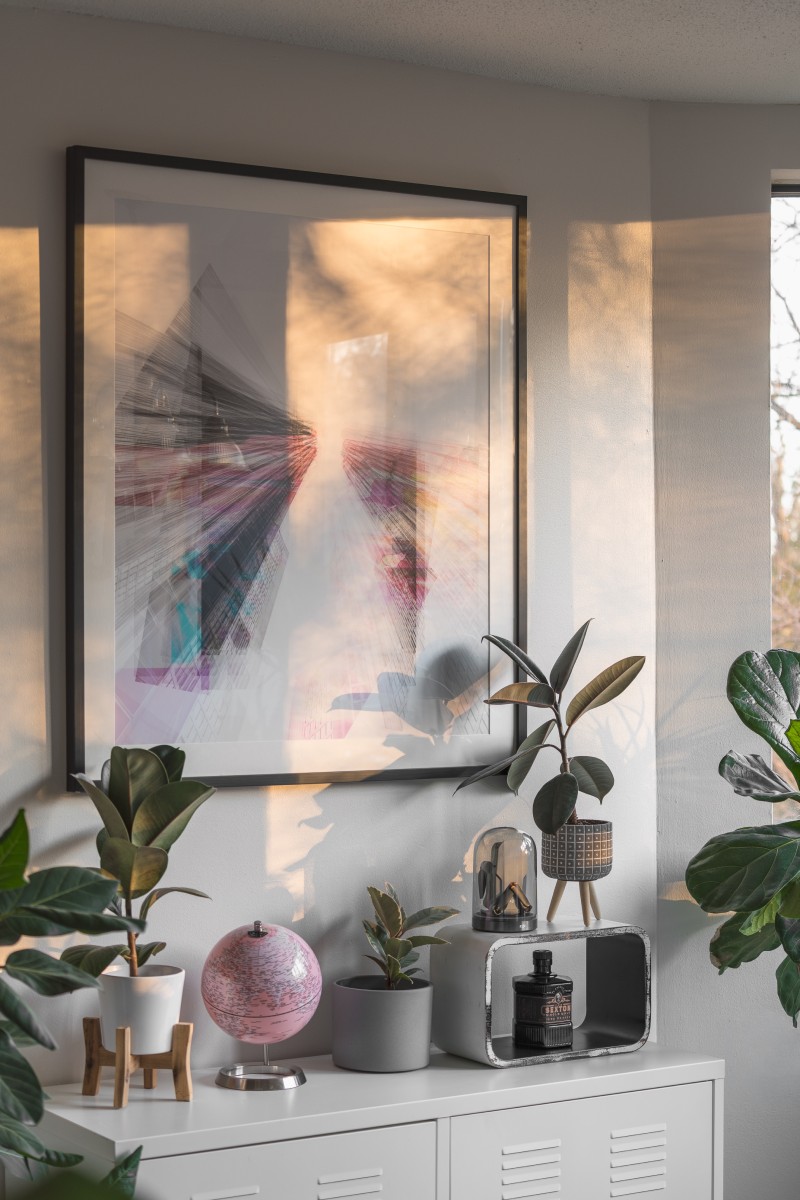
Description and Appeal of the Rubber Plant
The Rubber Plant, characterized by its robust, glossy dark green leaves, and impressive height, possesses an understated elegance that enhances interior spaces. Its architectural structure and grand, oval leaves make it not only a favorite amongst plant lovers but also a striking addition to any room, offering a slice of tropical tranquility and a touch of natural, verdant allure.
Distinct Aesthetic Qualities
The Rubber Plant’s leaves, which can grow up to 12 inches long, offer a bold aesthetic statement, while its sturdy stems ensure it remains upright and proud, even as it reaches new heights.
A Token of the Tropics
Offering a tropical vibe to living and working spaces, the Rubber Plant serves as a constant, vibrant reminder of nature’s boundless beauty amidst urban environments.
Its Effectiveness in Air Purification
When it comes to air purification, the Rubber Plant is a formidable ally, adept at removing toxins such as formaldehyde from the atmosphere. It silently combats indoor air pollutants, ensuring a cleaner, fresher environment, thus contributing substantially to the creation of a healthier living and working space.
A Knight Against Formaldehyde
This plant is especially noted for its proficiency in removing formaldehyde, commonly found in household products, from the air, enhancing the air quality of its surroundings.
A Subtle Oxygen Supplier
Additionally, like other plants, the Rubber Plant takes part in the process of photosynthesis, discreetly enhancing the oxygen levels in the room, and promoting a fresher, more breathable space.
Tips for Rubber Plant Care and Maintenance
Despite its upscale appearance, the Rubber Plant requires relatively straightforward care, asking for basic needs such as appropriate light, adequate watering, and occasional feeding to thrive and continue its role as an indoor air purifier.
The Right Light
Ensuring it receives bright, indirect light while being shielded from harsh, direct sunlight will keep its leaves lush and vibrant.
Watering Wisdom
Adhering to a watering regimen that allows the top layer of soil to dry out between sessions will help prevent overwatering and root rot, ensuring the plant’s longevity and vitality.
Feeding and Fertilizing
Providing it with a balanced, liquid fertilizer every so often during the growing season (spring and summer) will feed its growth and ensure it continues to be a vibrant, purifying presence in your space.
In sum, the Rubber Plant effortlessly blends striking aesthetics with notable air-purifying capabilities, providing a visually stunning and environmentally beneficial addition to any indoor space. With a dash of care and a sprinkle of attention, the Ficus elastica stands resilient, gifting its owners with cleaner air and a lush, evergreen ambiance that pervades throughout the seasons.
Aloe Vera (Aloe barbadensis miller)
Amidst the plethora of indoor plants, Aloe Vera reigns supreme not just for its myriad of skin and health benefits but also for its ability to enhance air quality within our living spaces. This humble succulent, often recognized for its luscious, tapered leaves and potent gel, encapsulates a holistic approach towards a healthy indoor environment and personal wellness. Its subtle elegance and ease of care make it a popular choice amongst indoor gardeners, enabling individuals to create a green oasis even in the confines of their homes.
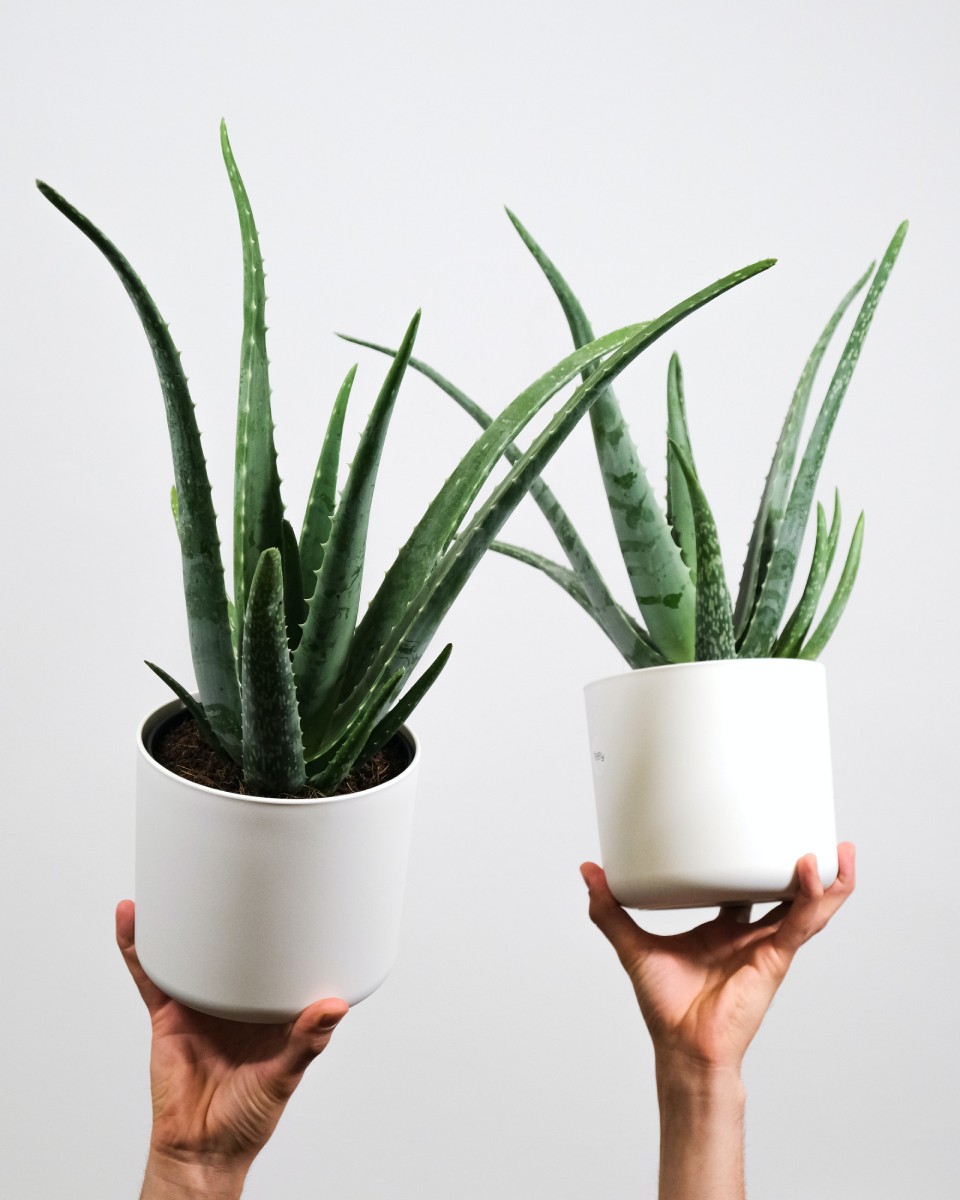
Introduction to the Versatile Aloe Vera
Widely celebrated for its multipurpose healing attributes, Aloe Vera finds its roots in various traditional medicines and home remedies. Its lush green leaves are not just a visual treat but a reservoir of a gel that has been used for centuries to heal burns, cuts, and various skin ailments. Yet, the virtues of Aloe Vera extend beyond its topical and ingestible uses. Within your home, it silently battles indoor air pollutants, offering you a breath of freshness amidst urban dwellings.
How it Contributes to Cleaner Air
Diving into the realm of air purification, Aloe Vera emerges as a silent guardian against common indoor pollutants such as formaldehyde and benzene. Notably, its prowess in purifying the air was spotlighted by NASA’s Clean Air Study, which identified its capacity to improve air quality, creating a healthier living space. It absorbs toxins through its leaves, purifying the air in the process and mitigating the impact of pollutants originating from chemical cleaning products and paints. Furthermore, Aloe Vera also has the unique ability to release oxygen during the night, enhancing your sleep quality and ensuring that every breath you take is a little cleaner, a bit purer.
A Nighttime Oxygenator
Unlike most plants, Aloe Vera generously releases oxygen during nighttime, making it an exceptional companion for your bedroom. The enhanced oxygen supply during your sleep not only contributes to better air quality but also optimizes your sleep cycle and overall wellbeing.
Guidelines for Keeping Aloe Vera Thriving Indoors
Embracing Aloe Vera into your home is not merely about enjoying its visual appeal, but also about forging a symbiotic relationship where you nurture it as much as it nurtures your living environment. Ensuring it thrives involves considering a few key aspects of its care:
-
Light and Positioning: Aloe Vera basks in bright, indirect sunlight. A spot where it can receive ample light, such as a windowsill, ensures its growth without scorching its leaves.
-
Watering: As a succulent, it retains water within its leaves and requires infrequent watering. Ensure the soil is completely dry before you water it again to avoid overwatering and root rot.
-
Potting: Utilizing well-draining soil and a pot that allows excess water to escape is crucial. Consider a terracotta pot which is proficient in absorbing any extra moisture from the soil.
-
Pruning: Regularly remove any dead or wilted leaves from the base to facilitate its growth and maintain its aesthetic appeal.
Nurturing an Aloe Vera within your home seamlessly blends the aesthetic, health, and environmental strands, weaving them into a canvas that depicts mindful living. By caring for it, you allow it to care for your air, silently standing as a guardian that shields you from invisible pollutants, ensuring that every breath you inhale within your home is a step towards wellness.
English Ivy (Hedera helix)
When it comes to intertwining the enchanting visuals of cascading foliage with proficient air-purifying capabilities, English Ivy (Hedera helix) stands out remarkably in the botanical world. Recognized for its classic appeal and utilized prolifically in both indoor and outdoor spaces, this ivy doesn’t merely captivate with its aesthetic allure. It plays a silent, yet pivotal role in mitigating indoor air pollutants, making your spaces not only visually pleasing but also healthier to inhabit.
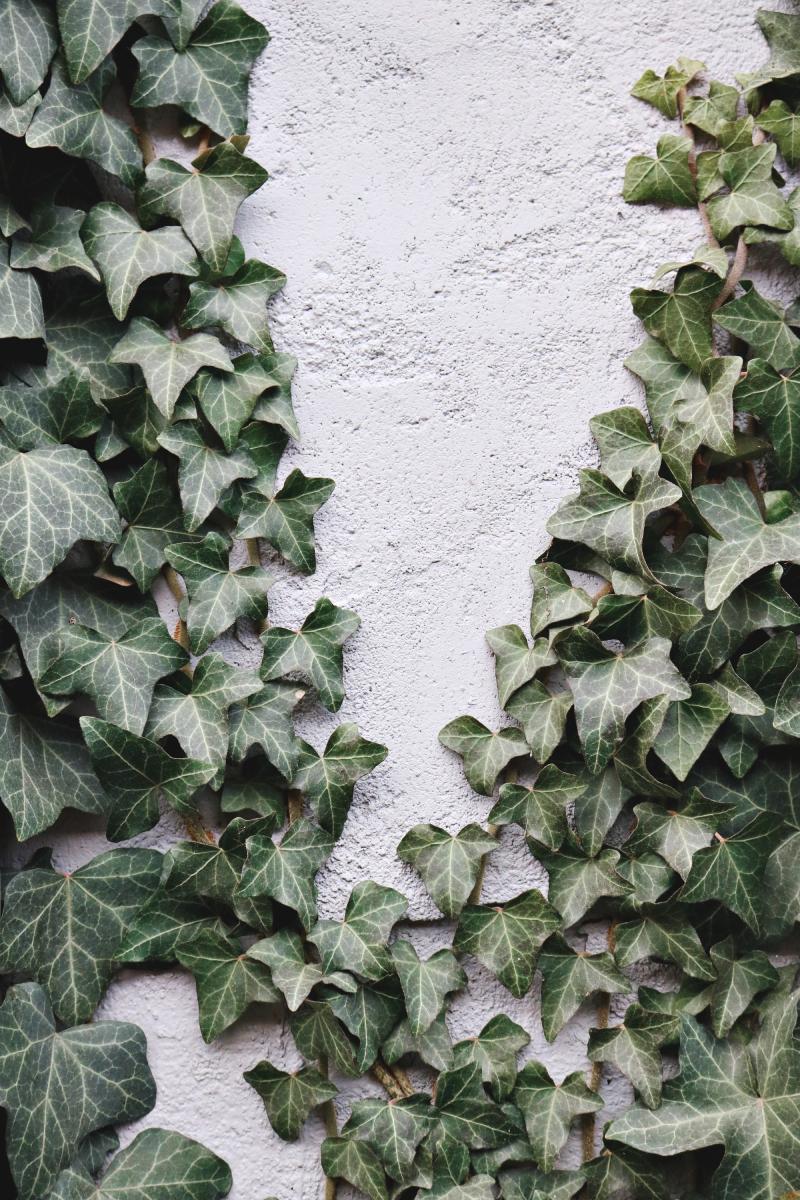
Overview of English Ivy’s Charm
English Ivy, with its vining habit and heart-shaped leaves, has been a beloved choice amongst horticulture enthusiasts and professional landscapers alike. The charm of its trailing vines gracefully adorning your indoor spaces imparts a timeless elegance and a lush ambiance. It doesn’t simply serve as a decorative element; it invites a piece of nature into your living spaces, creating an environment where tranquility and vitality coalesce.
Its Air Cleaning Capabilities
Beyond its obvious visual splendor, English Ivy quietly champions a cause that often goes unnoticed yet significantly impacts our indoor living – air purification. Various studies, including the noteworthy research conducted by NASA, spotlight English Ivy’s efficacy in reducing indoor air pollutants, specifically formaldehyde, benzene, and trichloroethylene. The ivy absorbs these common household toxins, providing a natural shield against indoor air pollution.
A Natural Humidifier
Interestingly, English Ivy also acts as a natural humidifier. Through a process known as transpiration, it releases moisture into the air, subtly enhancing the humidity levels, which can be particularly beneficial in arid climates or during dry winter months.
Care and Growth Recommendations for English Ivy
While English Ivy graciously purifies your air, reciprocating its benefits with appropriate care ensures that it continues to adorn and detoxify your living spaces effectively. Although it’s touted for its hardiness and low-maintenance nature, certain practices help it thrive indoors:
-
Lighting Conditions: English Ivy flourishes under bright, indirect light. While it can tolerate lower light levels, providing optimal light ensures lusher, vibrant growth.
-
Watering Practices: Your ivy prefers consistently moist soil, yet it’s crucial to avoid waterlogging to prevent root rot. Ensuring the top inch of the soil is dry before the next watering cycle is a good practice.
-
Pruning: Regular pruning not only maintains its shape and density but also stimulates more robust growth. Don’t shy away from trimming its vines to keep it looking its best.
-
Pest Control: Keep an eye out for pests like spider mites, especially when the air is dry. Regular misting and wiping the leaves can mitigate this issue, ensuring your ivy remains healthy and verdant.
Avoiding Common Issues
Though fairly robust, English Ivy can face issues like yellowing leaves, which often stem from overwatering. Maintaining a consistent watering schedule and ensuring proper drainage can easily circumvent this issue.
Integrating English Ivy into your home means inviting a living entity that silently enhances your quality of life. While it magnifies the aesthetic appeal of your spaces with its lush, trailing foliage, it also diligently purifies the air you breathe. Thus, every tendril that cascades down your shelf or the wall not only beautifies but also protects, making English Ivy a worthy addition to any home.
Bamboo Palm (Chamaedorea seifrizii)
Entwining tropical aesthetics with remarkable air-purifying abilities, the Bamboo Palm (Chamaedorea seifrizii) stands out as a spectacular addition to any indoor space. Revered for its lush, feather-like fronds and elegant growth pattern, it not only infuses interiors with a dash of the tropics but also works diligently to enhance the air quality, embodying both beauty and functionality.

Brief Description of the Bamboo Palm
The Bamboo Palm, originating from the lush rainforests of Mexico and Central America, has become a popular indoor plant worldwide due to its resilience and adaptability to indoor conditions. With fronds that elegantly arch outward and a clustering growth pattern that somewhat resembles bamboo, it’s an epitome of easy-going tropical beauty. Not only is it a favorite among decorators for its visually appealing aesthetics but it’s also celebrated for its notable adaptability to relatively low-light conditions, making it a versatile choice for various indoor settings.
How it Aids in Air Purification
Diligently working behind its striking appearance is the Bamboo Palm’s incredible ability to purify indoor air. Among its primary accolades in the realm of air purification is its proficiency in neutralizing airborne pollutants like benzene, formaldehyde, and trichloroethylene, which are common in indoor environments due to the prevalence of certain materials and products.
A Natural Humidifier
Adding to its list of virtues, the Bamboo Palm also plays a role in maintaining indoor humidity levels. Through transpiration, it releases moisture into the air, thereby acting as a natural humidifier and potentially providing relief to individuals who experience respiratory issues in drier indoor environments.
Advice for Nurturing a Bamboo Palm
While the Bamboo Palm graces your living spaces with its tropical charm and purifies the air, it asks for just a bit of care in return. Here’s how you can ensure your Bamboo Palm thrives and continues to adorn your spaces:
-
Lighting Needs: While adaptable to a range of light conditions, Bamboo Palms prefer bright, indirect light to showcase their best colors and maintain vitality. A spot where it can receive filtered sunlight, perhaps through sheer curtains, would be ideal.
-
Watering Protocol: Maintaining evenly moist soil without waterlogging is key to a happy Bamboo Palm. Allow the top inch of the soil to dry out between watering sessions to prevent overwatering.
-
Fertilization: A balanced, slow-release fertilizer applied during the growing season (spring and summer) supports its lush growth.
-
Pruning and Cleaning: Regularly wipe the fronds to prevent dust accumulation and prune any yellow or brown leaves to maintain its appearance.
Preventing Pest Infestations
Despite its hardiness, it’s essential to keep an eye out for pests like spider mites and scale, which can be mitigated through regular cleaning and ensuring optimal growing conditions.
Engaging with your Bamboo Palm, understanding its needs, and observing its growth not only enhances your living spaces but also creates a fulfilling, symbiotic relationship. It graciously enlivens your interior spaces with a vibrant, tropical ambiance while silently working to purify the air, making it a truly exceptional companion in your indoor plant collection.
Conclusion
Embarking on a journey through the leafy, verdant world of air-purifying indoor plants, we’ve explored varied species, each with its unique charm and intrinsic ability to cleanse our living environments. These plants not only elevate the aesthetic appeal of our homes but also stand as silent guardians, mitigating harmful pollutants and enhancing the air we breathe.

Recap of the Highlighted Plants and Their Air Purifying Qualities
In our exploration, we delved into the enchanting realms of diverse plants such as the Peace Lily, Rubber Plant, Aloe Vera, English Ivy, and Bamboo Palm, among others. Each plant, in its unique way, contributes to improving indoor air quality by neutralizing harmful pollutants, like benzene and formaldehyde, which often stealthily pervade our indoor environments. Their lush foliage and vibrant presence provide a twofold benefit of aesthetic beauty and functional air purification, making them not just decorative additions but vital components for healthier living spaces.
A Quick Glimpse Back
Revisiting our leafy companions, we recognized that while some plants like the Peace Lily and Bamboo Palm add a tropical flair to our spaces, others like the Aloe Vera bring along medicinal properties in addition to their air-purifying capabilities. Each plant introduced us to a new world, offering varying care levels, aesthetic appeal, and purification qualities, giving us options to choose the ones that resonate with our lifestyles and home care capacities.
The Overall Importance of Indoor Plants for Air Quality
Indoor plants, through their silent yet significant actions, become vital contributors to our wellbeing. The importance of sustaining quality air indoors is paramount, considering the substantial amount of time we spend within our homes and offices. Indoor air pollutants, which often go unnoticed, can subtly impact our health, and thus, having these green allies becomes crucial. They silently absorb the lurking pollutants, introduce freshness, and also have a remarkable impact on our mental wellness by providing a serene and calming environment.
Nature’s Own Purifiers
Substantiating their importance further, it’s noteworthy to acknowledge that these plants don’t just purify the air. They also play a crucial role in maintaining optimal humidity levels by releasing water vapor during transpiration and possibly aiding in reducing respiratory issues that can be exacerbated by dry indoor air.
Encouragement for Readers to Consider Adding These Plants to Their Homes
As we wrap up our exploration through the verdant world of air-purifying plants, consider welcoming these green companions into your homes and lives. Whether you’re a seasoned plant parent or a novice looking to start your green journey, there’s a plant for every home and every individual. Selecting plants that resonate with your lifestyle, available space, and care capacity can usher in a chapter of enriched living with cleaner air and verdant surroundings.
A Step Towards Greener Living
Enhancing our living spaces with these plants is a step towards more conscious and healthier living. By integrating them into our homes, we not only uplift the visual appeal but also sow seeds for a healthier future by actively engaging in purifying our immediate environment.
Let’s cultivate these leafy friends and nurture them as they quietly enhance our quality of life, allowing us to breathe a little easier, live a bit healthier, and find calm amidst our often chaotic daily lives. The road to cleaner air and serene living spaces is green and flourishing. Let’s walk it together, one plant at a time.

